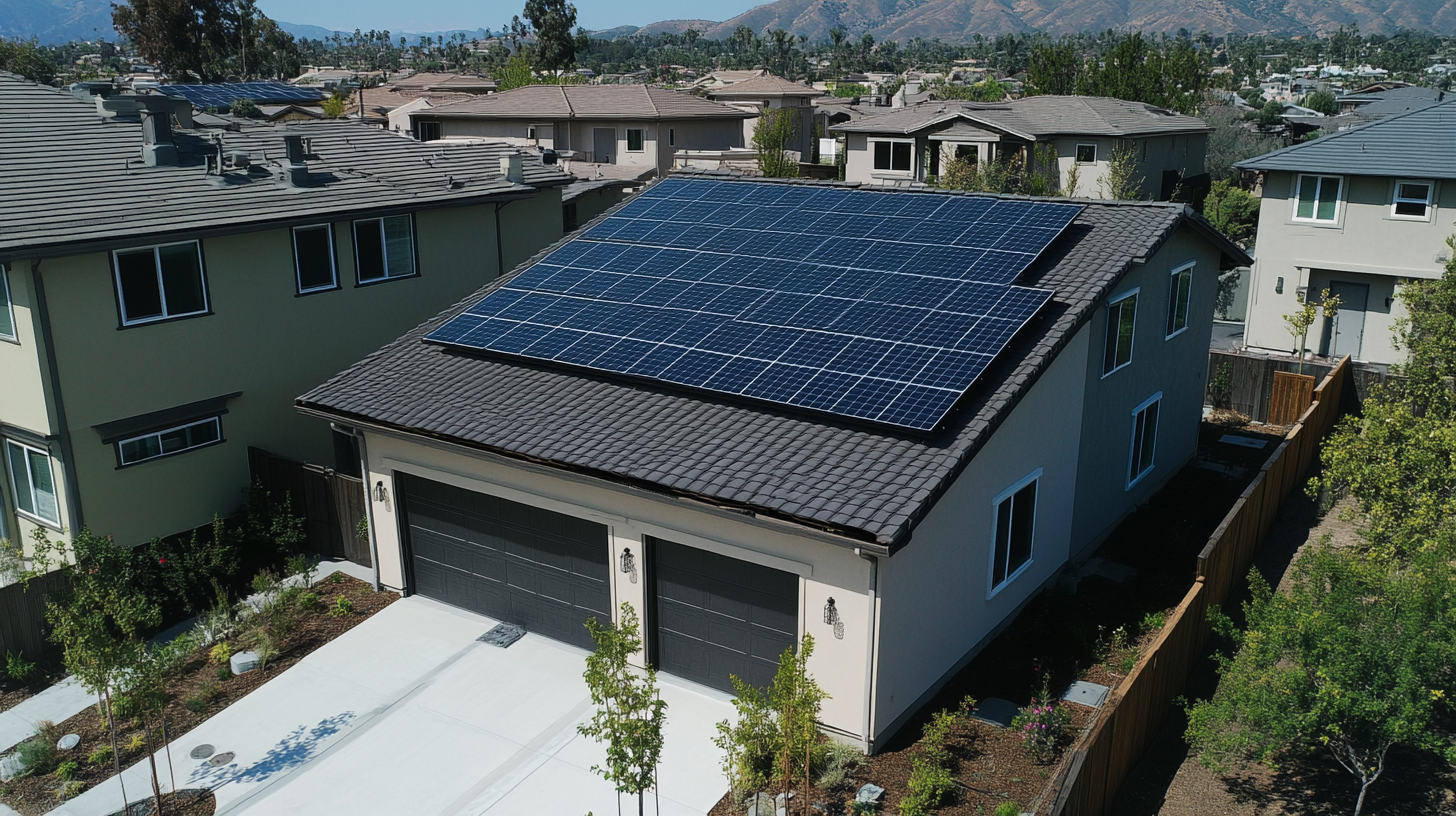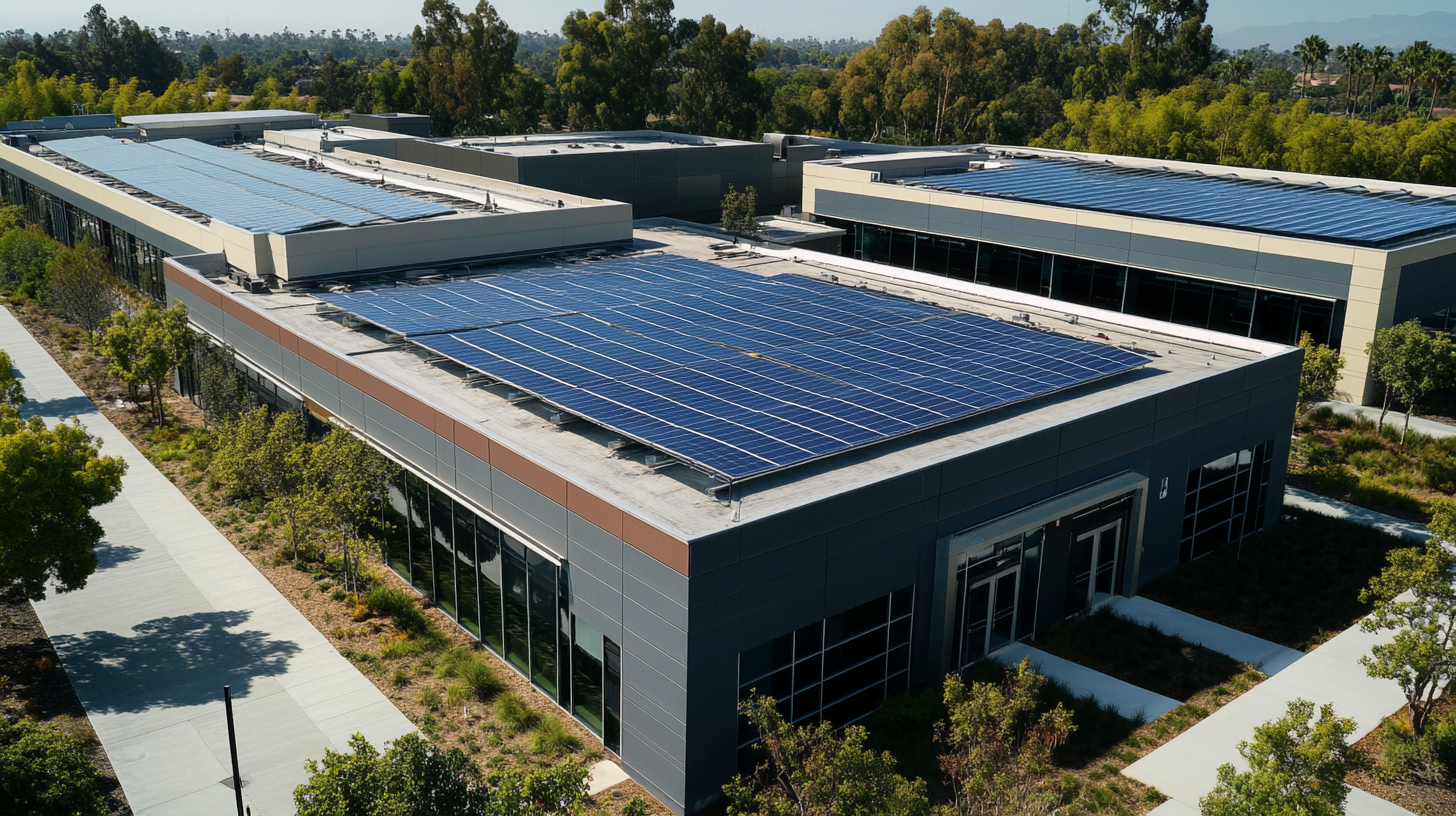Unlocking Efficiency: A Deep Dive into Cutting-Edge Solar Power Solutions and Performance Metrics
In recent years, the global shift towards sustainable energy sources has made significant strides, particularly in the realm of solar power. According to the International Energy Agency (IEA), solar energy has been the fastest-growing source of electricity over the past decade, with solar power solutions accounting for nearly 20% of the world's total electricity generation in 2022. This remarkable growth is driven by advancements in technology and a surge in consumer adoption, highlighting the increasing efficiency and economic viability of solar energy systems.
As the industry continues to evolve, performance metrics have become pivotal in assessing the effectiveness of solar power solutions. For instance, data from the National Renewable Energy Laboratory indicates that the average efficiency of solar photovoltaic panels has risen from approximately 15% in 2010 to over 22% today. These improvements not only enhance the attractiveness of solar installations for businesses and homeowners alike but also play a crucial role in meeting global energy targets. In this blog, we will explore the latest innovations in solar power solutions and delve into the performance metrics that are set to unlock a more efficient and sustainable energy future.

Innovative Technologies Revolutionizing Solar Energy Generation
The landscape of solar energy generation is undergoing a significant transformation, driven by innovative technologies that promise to enhance efficiency and reduce costs. One of the most exciting advancements is the development of bifacial solar panels, which capture sunlight on both sides, effectively increasing energy production. This technology not only maximizes output but also ensures that installations can generate more power in diverse conditions, including cloudy or reflective environments. Another noteworthy advancement is in perovskite solar cells, which present a game-changing alternative to traditional silicon-based panels. Their unique crystalline structure allows for high absorption efficiencies and simpler manufacturing processes. Researchers are making strides in increasing their stability, aiming for commercial viability that could drastically lower the price of solar electricity, making it more accessible for homeowners and businesses alike. In addition, energy storage solutions are becoming increasingly sophisticated, facilitating the integration of solar power into the energy grid. Advanced battery technologies, such as lithium-sulfur and solid-state batteries, are being developed to store energy more efficiently, ensuring that power generated during peak sunlight hours can be utilized later. This innovation not only addresses the intermittent nature of solar energy but also enables users to tap into renewable energy around the clock, effectively revolutionizing how we think about energy consumption.

Key Performance Metrics for Evaluating Solar Panel Efficiency
When evaluating the efficiency of solar panels, understanding key performance metrics is crucial for making informed decisions. Several metrics, including power conversion efficiency, temperature coefficient, and degradation rates, help us gauge how well a solar panel performs under different conditions. Power conversion efficiency, for instance, measures the percentage of sunlight converted into usable electricity, making it a primary indicator of a panel's performance.
The advancement of technologies, as highlighted in recent developments in AI and quantum computing, also impacts the solar power sector. As solar technology evolves, integrating AI can enhance the performance metrics by optimizing energy production and predicting maintenance needs. The introduction of high-performance equipment illustrates the trend towards automation and precision in solar energy setups, similar to innovations in other tech fields. Understanding these connections allows us to appreciate the broader implications of performance metrics not just in solar technology but also across various cutting-edge industries.
Furthermore, assessing solar panel efficiency goes hand-in-hand with environmental considerations. Metrics such as lifecycle analysis inform us about the overall sustainability of solar panels, from production to disposal. As we transition towards renewable energy sources, aligning performance metrics with environmental impact will become increasingly vital in ensuring a sustainable energy future. Embracing these evaluations will ultimately lead to more efficient solar solutions that meet both energy demands and ecological responsibilities.

Enhancing Energy Storage Solutions for Optimal Solar Utilization
In recent years, the integration of advanced energy storage solutions has emerged as a crucial component in the optimization of solar power utilization. As the global market for microinverters is projected to grow from $4.12 billion in 2024 to $15.4 billion by 2032—representing a compound annual growth rate of 17.92%—the need for innovative energy management technologies has never been more pressing. These advancements not only enhance the efficiency of solar energy systems but also ensure that energy generated during the day can be effectively utilized around the clock.
One of the standout developments in this realm is the introduction of intelligent energy management solutions, like those designed to fully harness a household's photovoltaic output. By enabling effective energy storage and distribution, these systems allow users to maximize their solar energy investment, leading to significant savings over time. The incorporation of artificial intelligence (AI) into these systems has further accelerated the optimization processes, enhancing the management of demand response and energy consumption patterns.
Moreover, initiatives such as the development of virtual power plants in Singapore highlight the industry's commitment to leveraging technology for improved energy management. By utilizing advanced data analytics and innovative deployment strategies, these virtual plants support the transition to renewable energy sources, ensuring that distributed energy generation is both efficient and sustainable. This forward-thinking approach is set to play a vital role in shaping the future energy landscape, making it essential for stakeholders to stay informed about these rapidly evolving technologies.

The Role of Smart Grids in Integrating Solar Power Systems
As the global shift towards renewable energy accelerates, the integration of solar power systems with smart grids has emerged as a pivotal development. By 2032, the market for Battery Management Systems (BMS) is projected to see substantial growth, driven by the increasing demand for both stationary and mobile systems. The expansion of solar energy relies heavily on effective energy storage solutions, and robust BMS technologies play a crucial role in managing these systems, irrespective of whether they employ lithium-ion, lead-acid, or solid-state batteries.
Smart grids facilitate the efficient integration of solar power by enabling real-time communication between energy suppliers and consumers. According to industry reports, the global market for smart grid technology is expected to expand significantly, with a particular focus on enhancing energy efficiency and reducing operational costs. These advancements not only support the deployment of renewable resources, like solar and wind energy but also enhance the resilience and reliability of the energy network.
Moreover, collaborations between utility companies and technology providers are pivotal in developing innovative solutions like integrated solar photovoltaic systems with smart energy management. For instance, recent agreements have centered on the co-development of solar street lighting systems incorporating advanced batteries and smart grid capabilities, showcasing the potential for renewable energy applications in urban settings. This fusion of technology and sustainable energy marks a promising direction for the future, underscoring the importance of smart grids in achieving global sustainability goals.
Future Trends Shaping the Solar Energy Landscape and Its Impact on Efficiency
As the world moves towards renewable energy sources, solar power continues to rise as a front-runner, driving a significant shift in energy consumption patterns. Future trends in the solar energy landscape are poised to redefine efficiency metrics, making solar energy more accessible and economically viable. One major trend is the advancement in photovoltaic technology, specifically bifacial solar panels, which capture sunlight from both sides, enhancing energy yield. This innovation is crucial, as it maximizes land use and increases the return on investment for solar installations.
In addition, artificial intelligence (AI) and machine learning are playing pivotal roles in optimizing solar energy production. These technologies enable predictive analytics for energy generation, helping to determine the best times for energy production based on environmental conditions. This data-driven approach not only enhances the operational efficiency of solar arrays but also allows for better integration into existing power grids, thus paving the way for reduced reliance on fossil fuels.
The integration of energy storage systems, such as advanced battery technologies, is another future trend that significantly impacts solar efficiency. These systems mitigate the intermittent nature of solar energy, providing a stable supply even when sunlight is not available. As these technologies evolve, they will further boost solar’s viability as a primary energy source, reinforcing its role in a sustainable future and solidifying its place in both residential and commercial energy portfolios.
